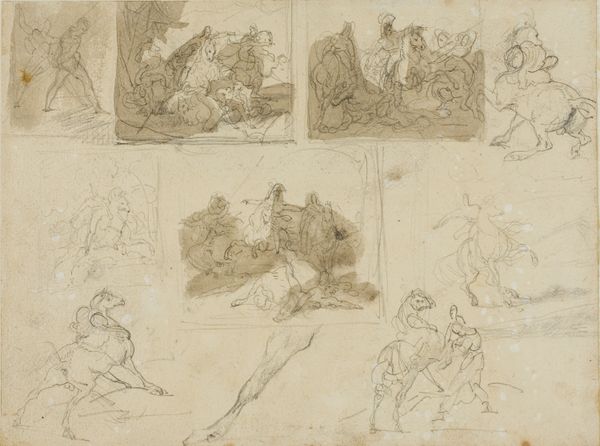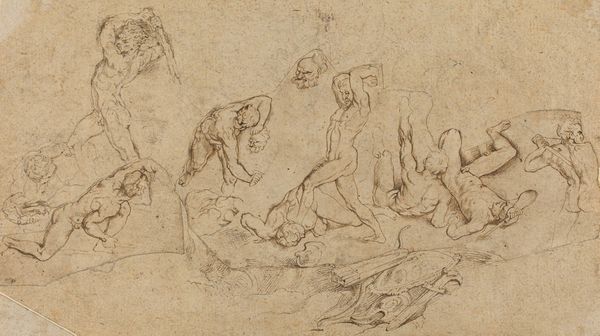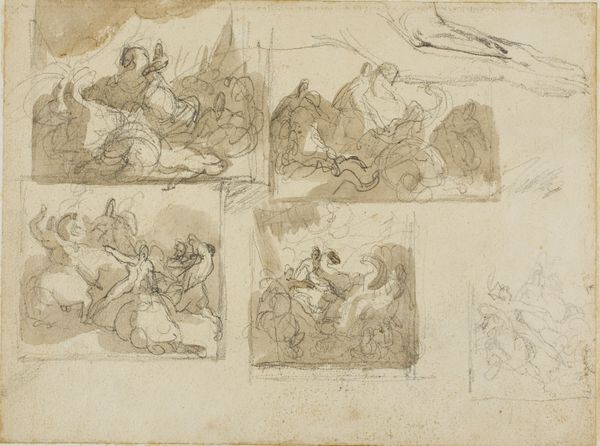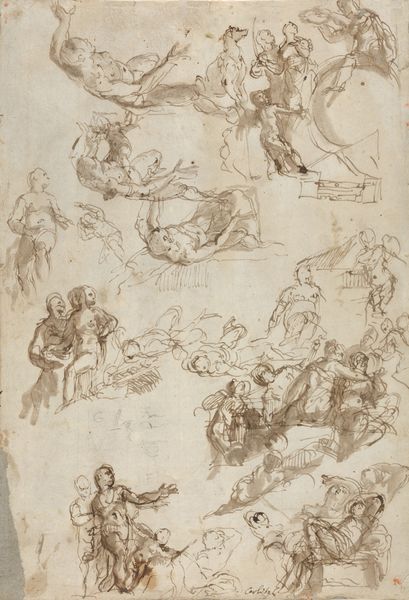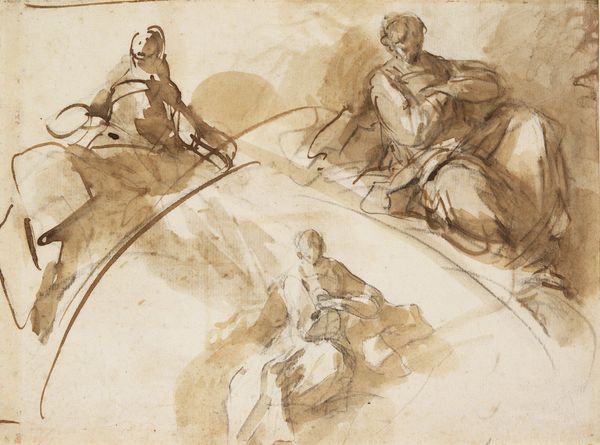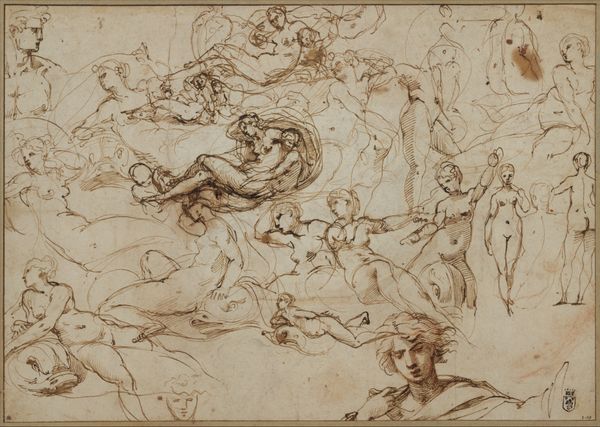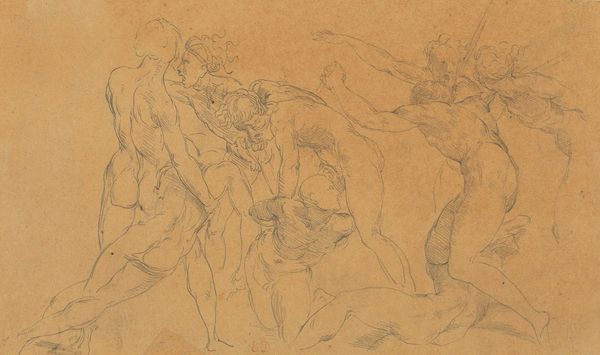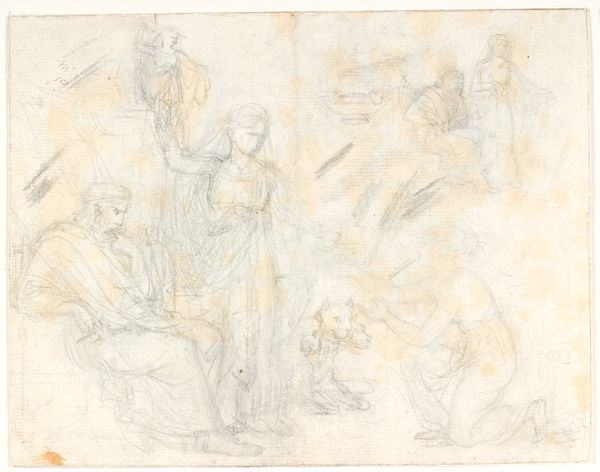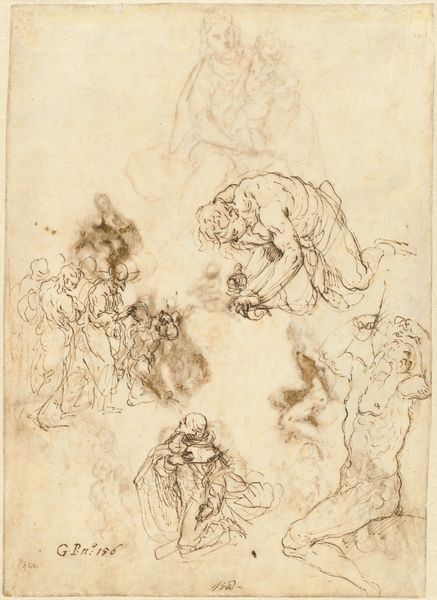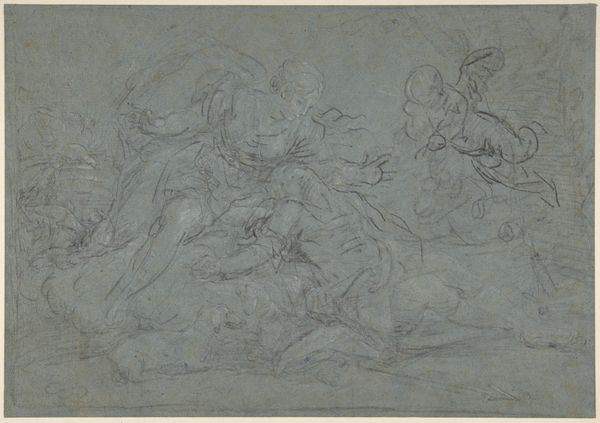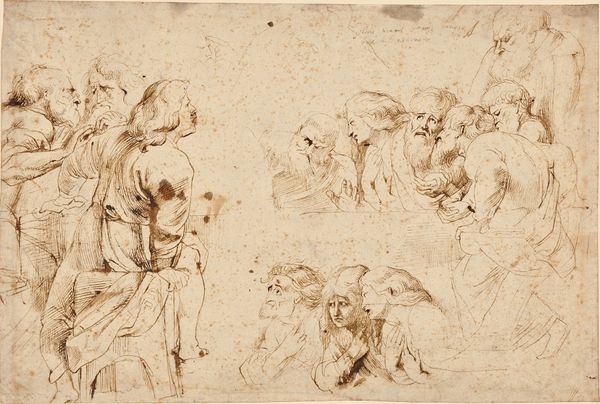
drawing, paper, pencil, charcoal
#
drawing
#
charcoal drawing
#
figuration
#
paper
#
romanticism
#
pencil
#
charcoal
#
history-painting
#
charcoal
Dimensions: 174 × 233 mm
Copyright: Public Domain
Curator: Look at this sheet, “Four Sketches for a Cavalry Battle” by Théodore Géricault, around 1814. What leaps out at you? Editor: Raw energy. You can almost hear the chaos, the clash of metal, the panicked cries. It's frenetic. I can sense Géricault working out compositions. Curator: Absolutely. You're right, Géricault's initial impulse isn’t polished grandeur but something urgent he’s pulling from within. He's using charcoal and pencil on paper to find a feeling as much as forms. You can almost feel him smudging and rethinking... a real sense of the studio there! Editor: Right, it highlights the production—the labor of image making. And how he keeps reworking the figures, not afraid to build up these shadowy, layered impressions to find the form. Look at the paper itself too. Its inherent qualities become integrated into the drawing. It provides tooth, grain... and an atmosphere through the off-white color. Curator: Precisely! It suggests movement and intensity, almost as though the figures are materializing from the fog of war. Each sketch encapsulates a micro-drama, doesn't it? There's something quite vulnerable in the medium... sketch to a finished composition… the material qualities become a support. Editor: A very valid point. But it is, at its core, also about romanticizing the horse, the weapon of power at this historical juncture, but let us look past its potential... Curator: I know what you mean... There is that raw immediacy to Géricault’s sketch. But his sketch has captured not only war itself, but also a glimpse into a passionate mind exploring history. Editor: Perhaps we’ve only scratched the surface today and yet both our minds have drifted from its aesthetic appeal into the historical world. What else is there to ask!
Comments
No comments
Be the first to comment and join the conversation on the ultimate creative platform.
